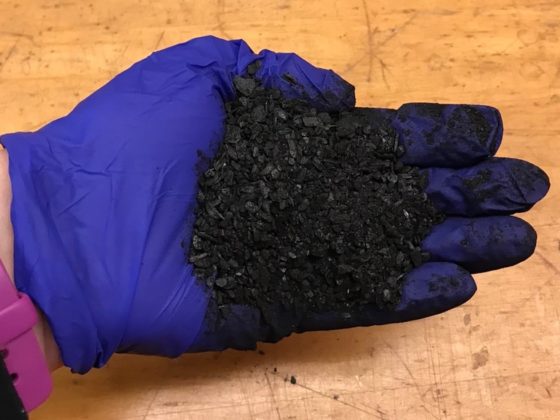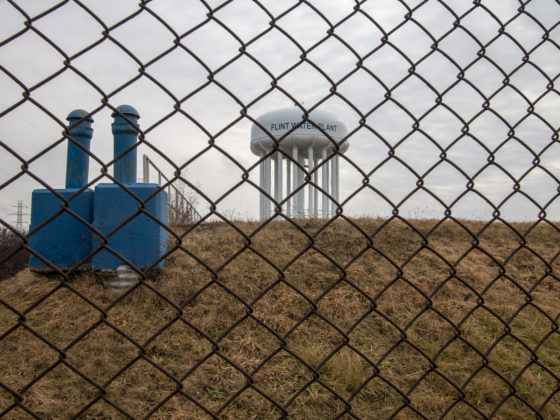When a stream is polluted, people often ask “Where did the pollution come from?” After a clean-up plan is implemented, people will ask “Is the stream cleaner now?” We rarely ask “When was that pollution emitted?” or “When will the stream be cleaner?” The time scales of hydrologic systems and contaminant transport are rarely considered, yet they may have profound impacts for effective management. This is especially true for nutrient pollution.
In the late 1940’s, the use of chemical fertilizers increased rapidly. Chemical fertilization, part of the Green Revolution, provided food for the nation’s burgeoning population. However, chemical fertilization also created a long legacy of pollution by the nutrients phosphorus and nitrogen. In the US, excess nutrients are now one of the most common pollutants of surface waters (USEPA 2018) and the nitrate form of nitrogen is one of the most common pollutants of groundwater (DeSimone 2009).
Nutrient pollution causes damages. In surface aquatic ecosystems, nutrients can cause eutrophication. In some cases, nutrient-driven algae populations temporarily explode in an algal bloom. Then, as the algae population crashes because they have blocked off their own light or depleted necessary nutrients, the bacteria that breakdown the algae can consume all the dissolved oxygen. This process creates persistent areas of low oxygen commonly called ‘dead zones,’ since most aquatic organisms cannot survive under these conditions. Eutrophication also sometimes triggers blooms of cyanobacteria (commonly called blue-green algae), which are toxic to fish, humans, and other species that come in contact with or ingest the cyanobacteria. Excess nitrates can contaminate groundwater, which over half of US residents use as their drinking water source. High concentrations of nitrate are toxic to humans, especially to infants.
To identify and then restore polluted waters, the Environmental Protection Agency (EPA) established the Total Maximum Daily Load (TMDL) program. The TMDL is the mass of a pollutant that can be released into a particular waterbody on a daily basis without impairing the system. The first step in the TMDL process is to assess the water quality. The rate of impairment in the US is staggering. Over half of the assessed streams and rivers, over 70% of the assessed lakes and reservoirs, and nearly 80% of the assessed bays and estuaries are classified as impaired for at least one important use, such as fishing, recreation, or drinking (USEPA 2018). Once a waterbody is designated as impaired, the sources of pollution must be identified, the sustainable TMDL level determined, and then each source is allocated a portion of the TMDL.
Will the TMDL program effectively and cost-effectively improve water quality in the United States? We don’t yet fully know, at least in part, because of the time scales of environmental systems. To see why, it is useful to provide some context. The water in a stream can be divided into two main types: direct runoff from a storm event and baseflow. Baseflow is groundwater that has discharged into the stream, and it is baseflow that keeps streams flowing between precipitation events. The proportion of the stream flow that is baseflow varies depending on a suite of factors including land use, topography, and geology. Field studies have found that baseflow can represent as much as 84% of the total annual flow in a stream (Tesoriero 2013). Because stream baseflow comes from groundwater, the source of nitrates in stream water may be contaminated groundwater. Since groundwater moves much more slowly than stream water, this adds a wide range of time scales to understanding and managing stream pollution.
Consider the case of the Chesapeake Bay and its 64000-square mile watershed. Despite 25 years of reclamation efforts, the Bay was still impaired so the EPA created the Bay TMDL in 2010. The Chesapeake Bay multi-state drainage remains the largest watershed to have a TMDL. The projected cost for just Virginia to comply with the Bay TMDL is between $13.6 billion to $15.7 billion (Ward 2012). Given these extraordinary clean-up costs and a contentious political environment, it is especially critical for these funds to be invested effectively, but let’s consider the nitrate transit paths to the Bay. As much as 70% of the nitrate entering the Chesapeake Bay from the Delmarva peninsula (Delaware plus the eastern shores of Maryland and Virginia) was slowly transported through groundwater (Ator and Denver 2012). In fact, it has been estimated that the mean age of groundwater discharging into streams on the Delmarva peninsula is several decades (Sanford and Pope 2013; Zell et al. 2018). An example groundwater age distribution for a watershed in the upper Delmarva is shown in Figure 1. Spatial variability in transport times, as shown in Figure 1, also adds a whole new dimension to effective management.
Since much of the baseflow into the Chesapeake Bay may be considerably older than when we began trying to clean-up the Bay, it’s hard to evaluate if our clean-up efforts are yet working. Our management plans may be appropriate, but we simply haven’t waited long enough to observe the benefits. Should effectiveness be measured simply by load removed from the system, or should we consider when the change in load will reach the stream?
While we may not be able to change the time scales of environmental systems, we will at least need to institutionalize the patience to work within them.

References:
Ator, S. W., & Denver, J. M. (2012). Estimating contributions of nitrate and herbicides from groundwater to headwater streams, Northern Atlantic Coastal Plain, United States. JAWRA Journal of the American Water Resources Association, 48(6), 1075-1090.
DeSimone, L.A., 2009, Quality of water from domestic wells in principal aquifers of the United States, 1991–2004: U.S. Geological Survey Scientific Investigations Report 2008–5227, 139 p., available online at http://pubs.usgs.gov/sir/2008/5227
Sanford, W. E., & Pope, J. P. (2013). Quantifying groundwater’s role in delaying improvements to Chesapeake Bay water quality. Environmental Science and Technology, 47(23), 13330-13338.
Tesoriero, A. J., Duff, J. H., Saad, D. A., Spahr, N. E., & Wolock, D. M. (2013). Vulnerability of streams to legacy nitrate sources. Environmental Science & Technology, 47 (8), 3623-3629.
US Environmental Protection Agency (USEPA 2018). Clean Water Act Section 303(d): Impaired Waters and Total Maximum Daily Loads (TMDLs), https://www.epa.gov/tmdl, as of May 2018.
Ward, E. (2012). The Cost of the Chesapeake Bay TMDL for Virginia, May 21, 2012, Green Risks,
Zell, W.O., T.B. Culver, & W.E. Sanford (2018). Prediction uncertainty and data worth assessment for groundwater transport times in an agricultural catchment, Journal of Hydrology, doi:https://doi.org/10.1016/j.jhydrol.2018.02.006
Teresa B. Culver, Department of Civil and Environmental Engineering
Associate Chair of Civil and Environmental Engineering
Director of Undergraduate Programs
Associate Professor





